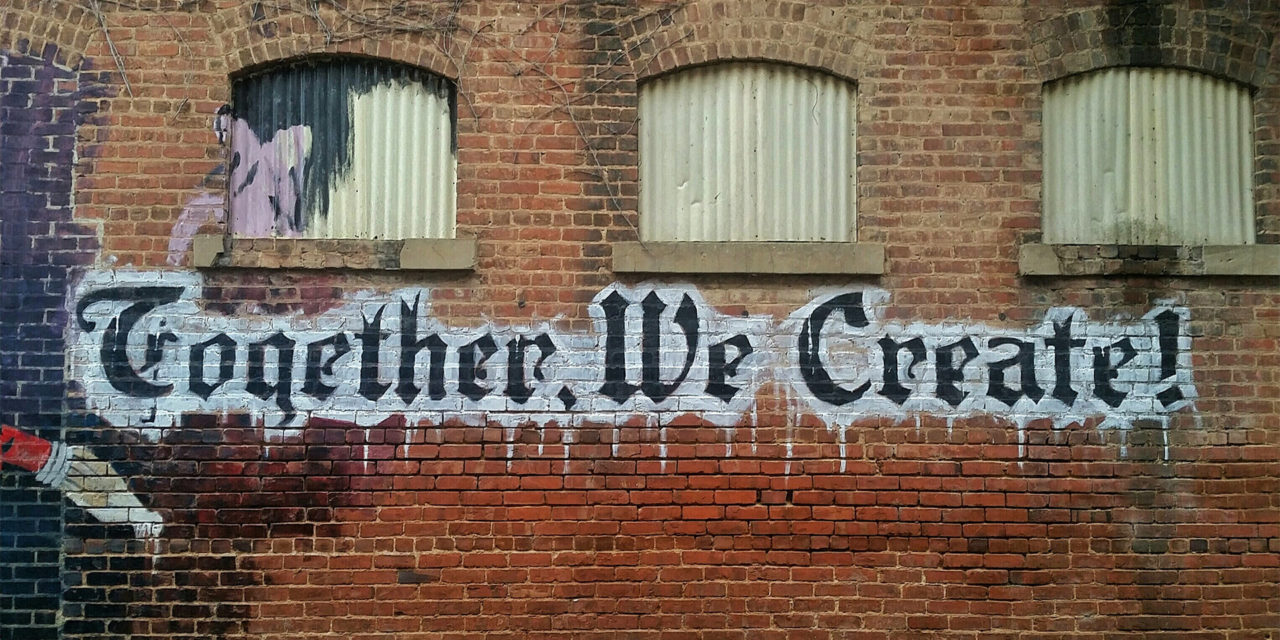We’ve all been learning a lot about relationships during the Covid-19 pandemic. Stay-at-home orders have forced us to learn new ways to co-exist with family, connect with friends, and collaborate with co-workers. My particular household at present consists of myself, my husband, our adult daughter from Texas (stranded here by travel restrictions), and the college student renting our basement. Together practically 24-7 since mid-March, we’ve managed to create a new, fairly well-functioning family unit—though it has not been without some adjustments on all sides. I’ve learned to get up earlier before my husband starts Zoom meetings in our bedroom, our daughter has learned to live with her extremely limited wardrobe, and our tenant has somewhat grudgingly given up singing in the shower late at night.
In the midst of all this, I learned that a close friend has been going through a much more painful adjustment of his own in regard to his church family.
I first met Francisco when he and his wife were students in an English-as-a-Second Language class I was teaching at our local community college here in Longview, Washington. They came here from Colombia to minister to the Spanish-speaking residents of Cowlitz County. We quickly became friends when we realized that we shared a common vision to make our churches, and by extension the community around us, places in which immigrants are welcome and well-integrated, able to participate in all aspects of community life.
An established local church initially welcomed Francisco onto its staff, but then unilaterally withdrew its support of him and his growing group of believers. The leadership of the host church reasoned that, after several years, the Latino congregation “should be independent by now” and was no longer their responsibility. The decision reflected a fundamental difference in vision: Where Francisco saw an opportunity to minister to the unique needs of individuals who were an integral part of the larger congregation, the other pastoral staff saw only a need to temporarily subsidize an entirely new, and separate, church. Because these two divergent visions were neither clearly formed nor communicated from the beginning, Francisco and his small flock were left with feelings of hurt, abandonment and rejection. Thankfully, they have been welcomed into another fellowship where they have been able to contribute to remote worship and teaching sessions during the quarantine.
Hearing Francisco’s story has given me an opportunity to reflect on my own role in creating greater unity among all Christ-followers in my community. Many churches in our area are willing to rent building space to small, independent groups who desire to worship Christ in their native languages, and for some mainstream congregations this may be the extent of their existing capacity to “love their neighbor.” First-generation immigrants do need the cultural and linguistic familiarity of home in order to cope with the challenges of life in a new country, and they are thankful for the physical space in which to safely gather.
Yet, as I have learned in conversations with Francisco and other immigrant leaders, this practice reinforces social isolation within the larger community. In addition, many times the children who grow up in ethnically isolated churches become disconnected from both their faith and their family as they approach adulthood. So, what can be done to promote greater unity, both across cultures and over time? The answer is complicated. Just as the various members of my household have had to make space for one another over the past few months of quarantine, our churches are also faced with the challenge of creating welcoming and inclusive environments in which a diversity of people can thrive. I believe that now, more than ever, we need to commit to genuine integration in our churches and communities—especially as our region adapts to life in a post-Covid society.
Christian theologian Miroslav Volf, in his book Exclusion and Embrace, explores how we as people created in the image of the Triune God are designed to live in covenantal relationships which require “re-arranging the self in light of the other’s presence” (154). Integration can be defined similarly as the on-going process by which previously marginalized residents become full participants in the social, economic, and decision-making systems of their community, which is itself transformed by residents’ participation in those systems. When we are dedicated to the well-being of others who don’t belong to our core communities, to the point of being willing to change for their benefit, our relationships demonstrate God’s love.
Easier said than done, of course. But in my conversations with Francisco about his struggles, I’ve realized that there are steps toward a more integrated, covenantal way of life that I and other Christ-followers in my community need to consider.
Welcome
First, we need to acknowledge that welcoming communities require welcoming people. In the Gospels, Jesus confronts the religious leaders of his day with the parable of the new wine, stating, “… no one puts new wine into old wineskins. For the wine would burst the wineskins, and the wine and the skins would both be lost. New wine calls for new wineskins” (Mark 2:22 NLT). Likewise, new programs aimed at increasing the integration of immigrants into our churches and communities will fail unless we address the underlying relational barriers that exist on a personal level. What those barriers are can vary from one community to another, but in smaller, more rural areas like mine, there is a general mainstream expectation that immigrants should assimilate—that is, conform to the values and lifestyles of the dominant culture at the expense of their own. In terms of relational barriers put up by the immigrants themselves, there can be a reluctance to fully put down roots because of a desire to someday return home to their country of origin. Layered over these deeper attitudes is a mutual wariness caused by the ethical dilemmas surrounding immigration and how we can best address human rights abuses while upholding the rule of law.
In the face of these obstacles to authentic relationships, it is often easier to simply ignore one another and hope for the best. Yet if that is the default choice, we all miss the opportunity to build a thriving community. We can opt to merely co-exist, but is that truly loving our neighbors? For those who seek to emulate Jesus, it would be better to address the underlying relational barriers with courage and vulnerability if we really want to foster a welcoming environment and build positive reciprocal relationships with one another.
Mutuality
Second, we would do well to learn and remember that everyone has something to offer. It was indeed humbling for me to realize that God has sent Francisco, and others, from places I had always thought of as “mission fields” to my very own community to minister to people in ways that I cannot. In our efforts to demonstrate love for our immigrant neighbors it is easy for those of us from mainstream culture to approach them with a paternalistic attitude. Especially in times of crisis, it is tempting to ask, “How can we (as privileged host society members) help you (the needy strangers in our midst)?” Immediate help in the form of temporary financial aid or sanctuary may be an appropriate response by a loving community at certain times, but ultimately the goal should also be to learn to appreciate and respect one another so that together we can make our community a better place to live for everyone.
Church Re-imagined
Finally, if we seek to build communities of welcome and mutuality, we need to be willing to change how we do church. The consumer mentality of “finding a church that meets our needs”—where we are comfortably ensconced among others who are like us—must be replaced with a commitment to covenantal love for the people whom God brings together, whoever they may be. Participating in Christ-centered community with those who might do things differently, or rub us the wrong way, is how we truly grow in grace and demonstrate the transformative, unifying power of the Spirit in the midst of our human messiness.
Prior to the upheaval of Covid-19, the means by which Francisco had hoped to build relationships and create a truly integrated church was to offer Spanish-language singing and teaching in another room at the same time as the English-language services were being held. This way, all the children (who typically do not have the significant language barriers faced by their parents) could be together in a children’s program, and members of both groups would have an opportunity to interact before and after the worship service. Inviting leaders from both groups to plan all-church events like vacation Bible school and Easter celebrations, holding joint baptism services, and offering language-learning classes for both English and Spanish are other possible expressions of a vision for integration. This “co-congregation” approach honors the unique language and cultural needs of the Latino worshippers while at the same time demonstrating a more holistic and long-term, multi-generational vision for the ministry of the church as a whole. In many ways, doing church remotely has made implementation of some of these ideas easier for Francisco as everyone is learning to connect in new, more intentional ways.
As we gradually emerge from quarantine and begin to re-engage with our communities, we have the opportunity to make changes in the ways we relate to our neighbors. Now is our chance to consider how we can better love one another in the context of genuine relationships. Now is the time to consider how to better welcome, connect, and equip all marginalized groups, including immigrants, in our communities. Integration in the church is more than changing up what is served at the annual potluck. It is more than hanging a piece of indigenous art in the foyer. And it is certainly more than allowing a small group to use a room in the back of the building for an isolated week-night worship service. If we genuinely desire for our churches and our broader communities to become truly inclusive, we must make space in our hearts as well as in our buildings.
Sources
Volf, Miroslav. Exclusion and Embrace: A Theological Exploration of Identity, Otherness, and Reconciliation. Nashville, Abingdon Press, 1996

